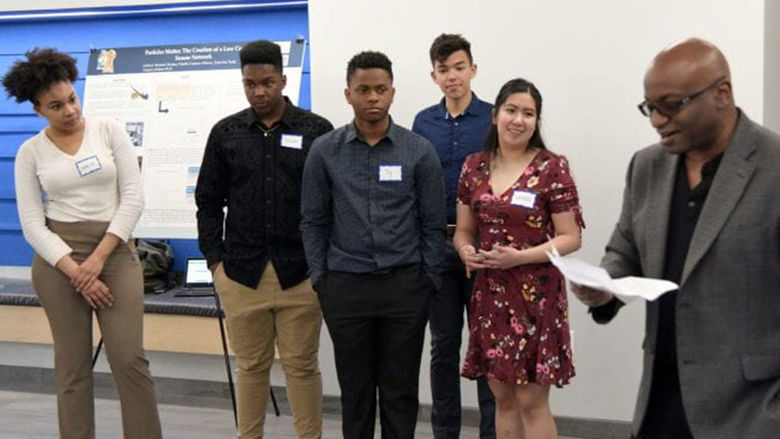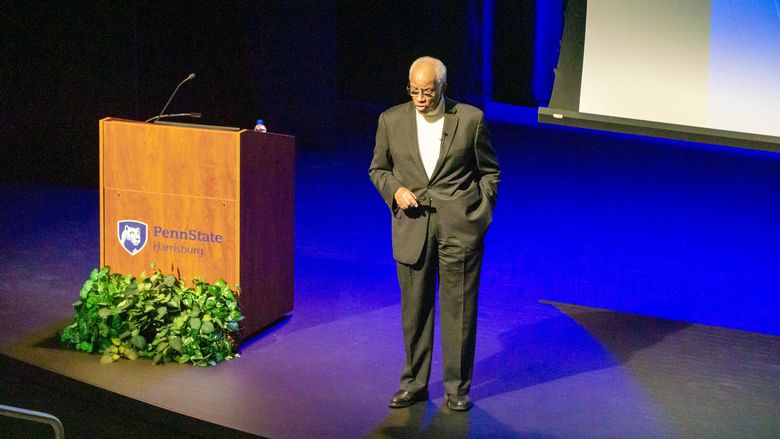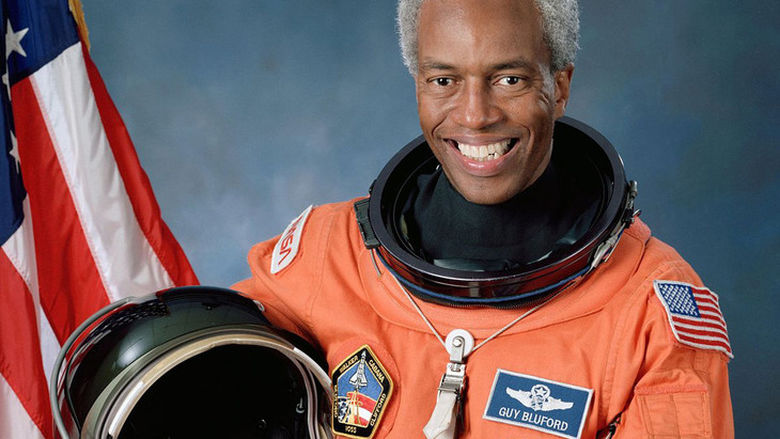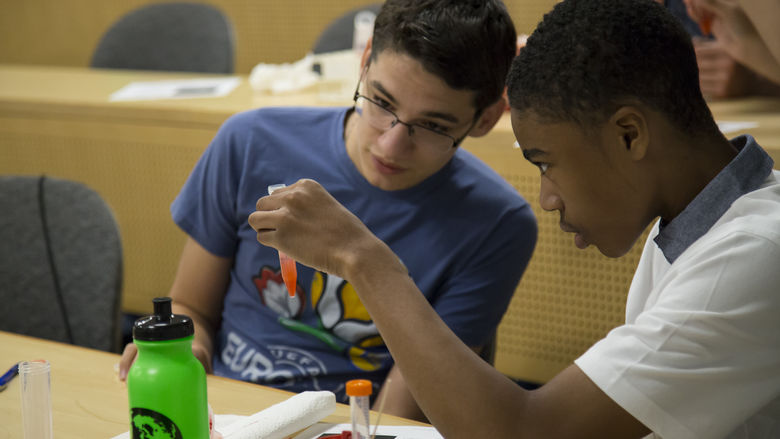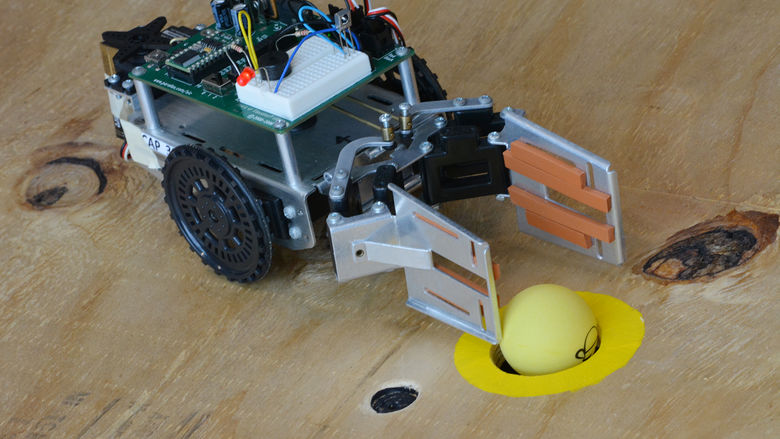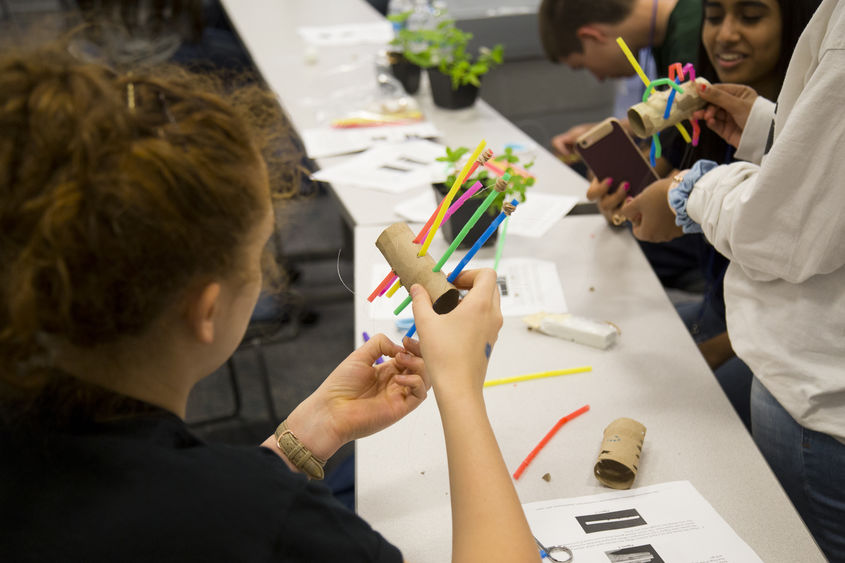
High school students got the opportunity to explore STEM disciplines at a Penn State Harrisburg summer camp.
HARRISBURG, Pa. — Penn State Harrisburg’s School of Science, Engineering, and Technology (SSET) hosted the second STEM Summer Enrichment Program, a free summer camp for high school juniors and seniors, from June 12 through 23. Thirty-three students from 18 different Pennsylvania schools attended the program, designed by Rafic Bachnak, director of the SSET, to allow participants to explore a variety of science, technology, engineering and math (STEM) courses.
Students were accepted into the program through an application process that evaluated high school transcripts, program interest, extracurricular activities and a written essay. The two-week day camp included two field trips and multidisciplinary workshops with University professionals. The students received training materials, supplies, a certificate of accomplishment from the University, and their picture with the Penn State Nittany Lion.
The camp was organized and overseen by Bachnak and Susan Lemieux Eskin, lecturer in physics, who sought to provide students a hands-on look into University life while also providing more details about subjects to which they might not have been exposed previously.
“This program is meant to draw out students’ natural interests and talents,” Eskin said. “There’s a lot of untapped talent because people who don’t have role models in STEM don’t always realize they’re suited to it.”
The participants were guided every day by three Penn State Harrisburg undergraduate and graduate students, who assisted the faculty and staff who taught each workshop. These students answered questions about everything from college life to engineering math.
Given the broad curriculum and number of topics taught in a single school year, it is often difficult for high school teachers to go into detail about singular disciplines, Eskin added. The summer enrichment program was intended to fill in these gaps and fan the flame of interest expressed by the students.
And for Marly Aziz, senior at Hershey High School, the program did just that.
“In my school, engineering topics aren’t emphasized — it’s more biology and chemistry,” Aziz said. “I feel like this program did a good job of introducing me, someone who’s never been exposed to engineering, to those topics.”
Aziz found that she thoroughly enjoyed the biology labs and sought to continue learning about the topic after the program ended.
“I met Dr. Sairam [Rudrabhatla] and spoke with him about potential research work,” she said, “because I really enjoyed my time in the bio labs, and I would like to get into research if possible.”
According to Eskin, previous program participants have expressed interest in remaining involved with the University through programs such as dual enrollment, which allows students to take courses at Penn State Harrisburg for college and high school credit. They have also contacted program instructors for advice on college preparation. The three dual enrollment high school students she has had in her physics classes to date showed enthusiasm and much promise, Eskin said. The STEM summer camp is just one of many ways the faculty at Penn State Harrisburg connect with local high schoolers.
In addition to the materials and certificates provided to the students, invitations to the School of Science, Engineering, and Technology Capstone Design Conference were extended to each participant.
The Capstone Conference is an annual event where SSET students showcase the culmination of their undergraduate studies with a senior project they designed. The capstone projects are a long-standing tradition, where students combine classroom learning with real-life applications and collaborate with industry sponsors.
The STEM Summer Enrichment Program was made possible by a grant from ArcelorMittal, a leader in the steel and mining industry with interests in innovation and sustainability, with offices located in Steelton, Pennsylvania.
The faculty and staff instructors for the program included:
Justin Keller, lecturer in mathematical sciences; Steve Carabello, lecturer in physics; Thomas Kell, laboratory supervisor; Mitch Spear, laboratory manager; Sairam Rudrabhatla, associate professor of biology; Jeremy Blum, associate professor of computer science; Shashi Marikunte, senior lecturer in civil engineering; David Boyd, research technologist; Seth Wolpert, associate professor of electrical engineering; Steve Grosse, research technologist; Brian Maicke, assistant professor of mechanical engineering; Ola Rashwan, lecturer in mechanical engineering; and Bill Moody, laboratory coordinator.
The Penn State Hershey Simulation Lab field trip was arranged through the office of Catherine Caruso, academic placements officer and senior instructor at the Penn State College of Medicine. David Wirick, retired general manager of ArcelorMittal Steelton, arranged the field trip to a local steel mill and provided support throughout the program.
